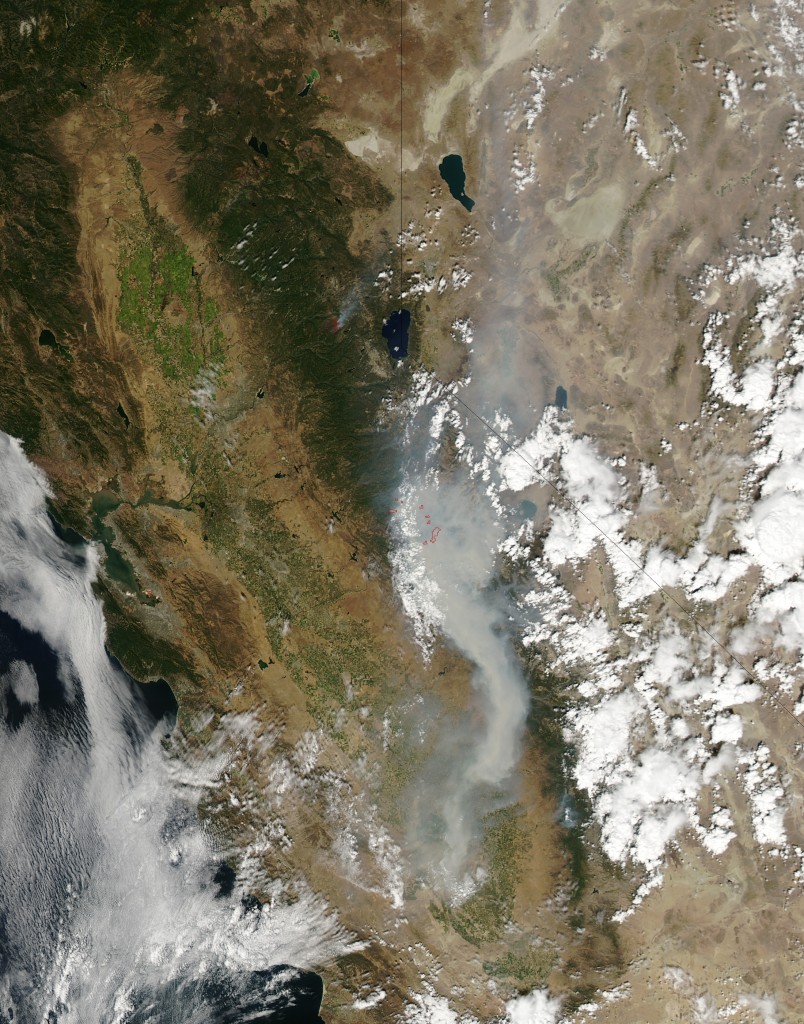While preparing my poster for the upcoming AGU Fall Meeting, I downloaded some data on fire activity in South America for background on why we are interested in biomass burning in the region. I wanted to quickly check I had the data in the correct format, so I just plotted the coordinates of the fire counts without an outline of South America.
I was surprised to see that the fire locations for August-October 2012 did a great job of outlining South America on their own!

Map of fire locations during August-October 2012 in South America from MODIS data from the Terra and Aqua satellites provided by NASA’s Earth Observing System Data and Information System (EOSDIS).
The data is from the MODIS instrument on NASA’s Terra and Aqua satellites. The data reports fire locations based on measuring the emission of infrared radiation by the land surface from space (like the infrared cameras on your favourite police chase tv show). Any 1km pixel with a fire detected within it is then included in the data – there could be more than one fire within the pixel but the instrument can’t distinguish these. You can find out more information about the technique here.
The widespread nature of the burning across South America is striking. Huge areas of the continent have fires detected within them. This is an annual endeavour with many of the fires started by people for land use change and agriculture. The main “season” runs from August to October, with the peak usually in September. These fires have been occurring for several decades now and they have transformed vast swathes of South America.
The burning produces large amounts of smoke, which can build up and pollute our atmosphere. This has important consequences for regional and global climate, air quality and also ecosystem development. I’m part of a project called SAMBBA, which as well as being a great acronym, is attempting to address some of the aspects of biomass burning that we don’t understand (which is a long list). I’ve written about the project and my part in it here and here previously.
As the map above illustrates, it is quite a big deal in the region. Stay tuned for future updates on the project.




